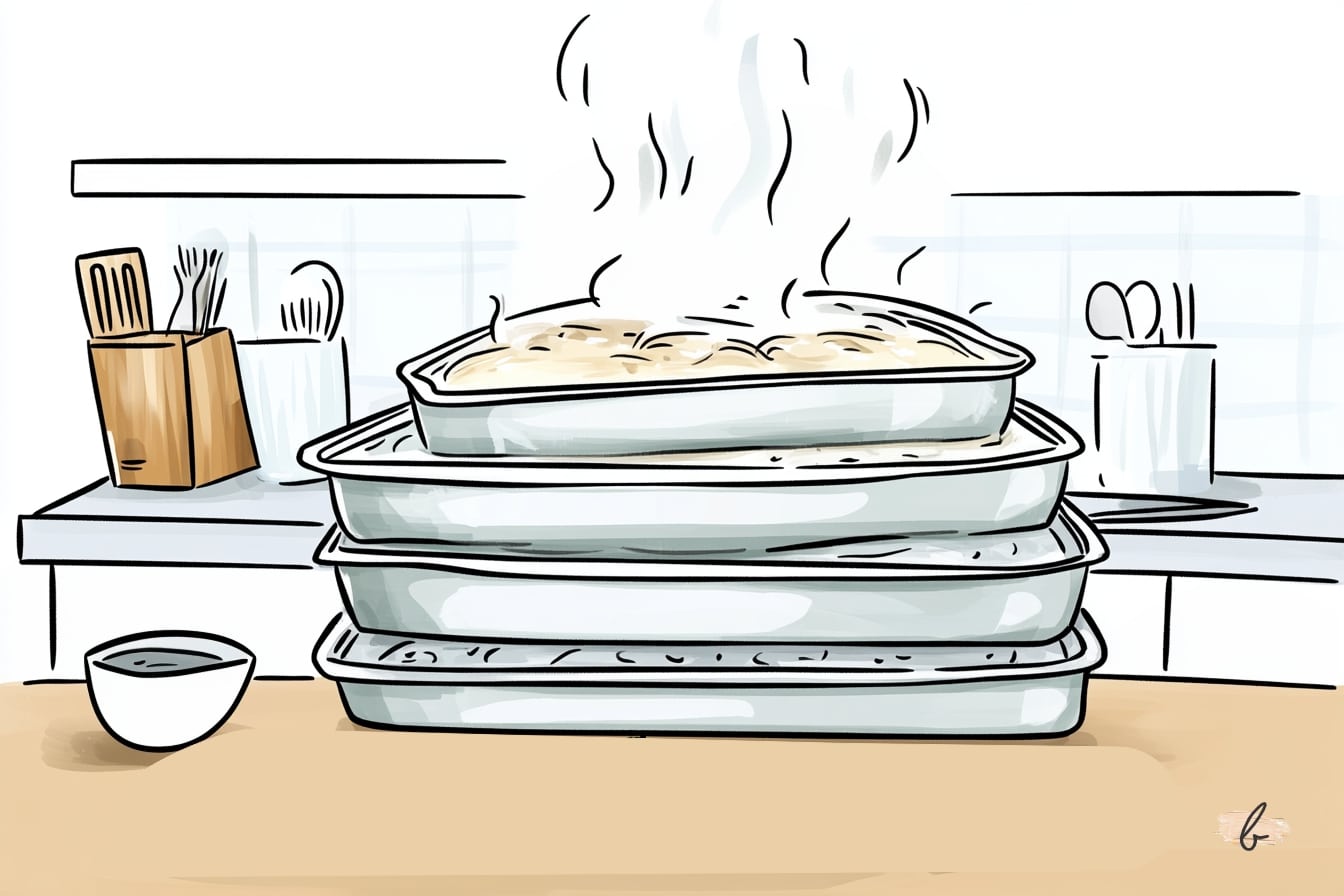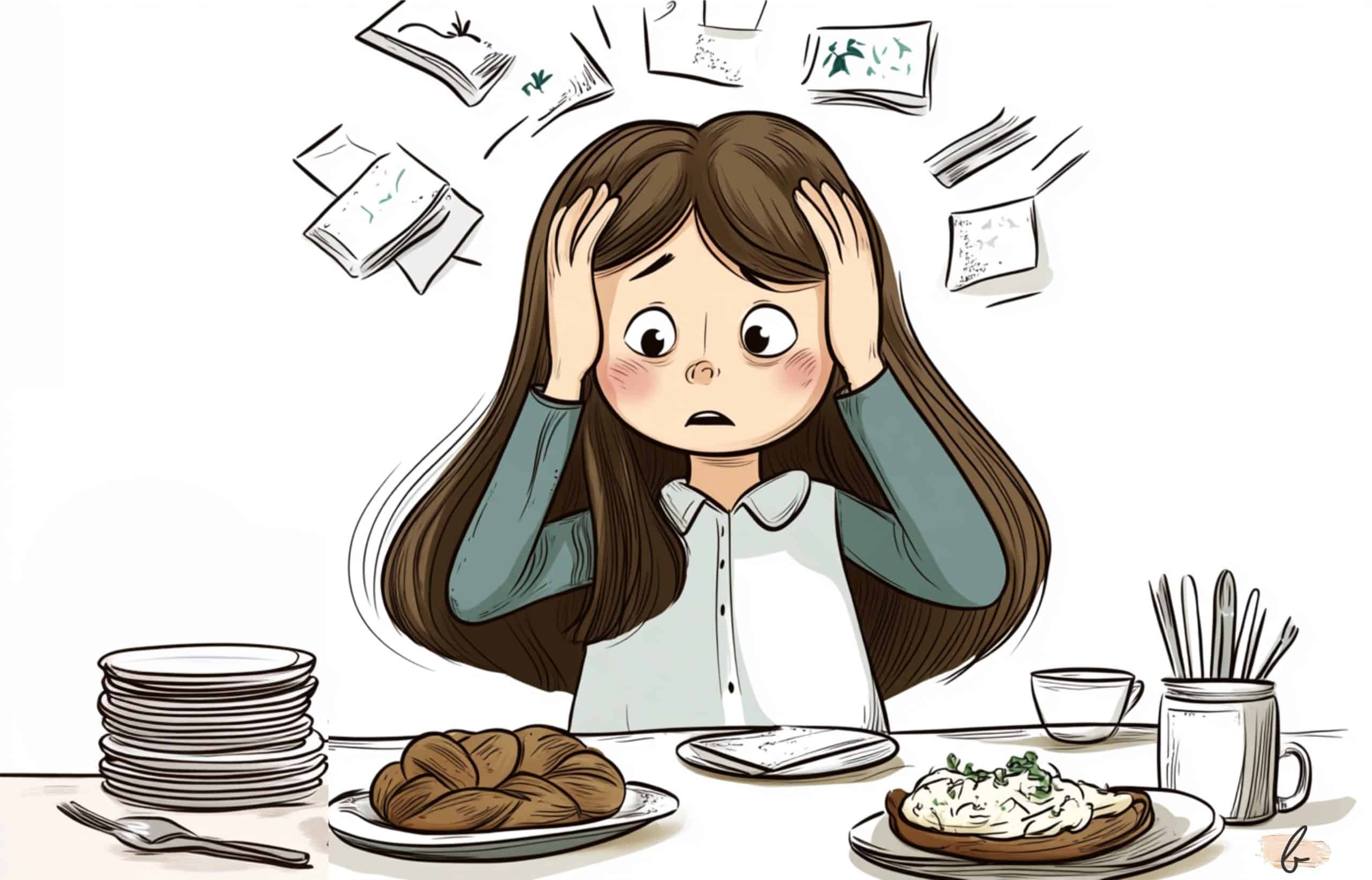It might seem a little complicated to figure out the logistics of how you’ll balance eating chametz when the house is Pesachdik, but with a little planning, it will be smooth.
When Erev Pesach falls on Shabbos, balancing the need to still have chometz and Pesach preparations can feel a little overwhelming. But it can be smooth and stress-free with a simple game plan.
Friday:

- Make sure that whatever food you will be serving at the Seder is defrosted/moved to the fridge before Shabbos.
- If you have another space where you can set your Shabbos table, set up your Seder in the dining room, and keep your Shabbos seudos in a different room. Otherwise you will only be able to start setting the Seder table after Shabbos ends.
Eating Challah with Minimal Mess
Since the rest of the meal will be Pesachdik, the challah needs a designated space, and you want to keep it crumb-free. You also don’t want to have an excess of bread available for this Shabbos–keep on hand only what you think will be eaten.
- Eat the bread outside – on the porch, deck, or backyard.
- Use pita or other types of bread instead of regular challah as they are much less crumby.
- If you do use challah, give each person a roll instead of breaking apart a larger loaf.
- If you are eating indoors, use a separate disposable tablecloth in a different room, then wrap it up and toss it, and continue the Pesachdik meal in the dining room.
- It’s still best to use plastic for the rest of the meal, as we don’t want to use our Pesach flatware when we’ve just eaten bread.
Shabbos Morning Seudah

- The morning meal needs to be finished early. The bread especially needs to be finished before sof zman achilas chametz, which is four halachic hours after sunrise (this will fall out between 10 – 11 am for most, depending on where you live). Repeat the cautious bread eating of the previous night.
- Immediately after, flush or discard crumbs in outside garbage cans. (In places where the township-owned the cans, it may not be in your possession, ask your LOR if this is fine.)
- Your kids won’t remember the exact logistics of how you handled challah, but they will remember your attitude. Stay calm, sweep up, and don’t stress! Then move onto the rest of the meal.
- For the rest of the meal, you want to serve something filling. Hot, filling Crock-pot dishes that work for Pesach include this Kugel, Yapchik, or Pesach Cholent. This roast over potatoes also works well in a Crockpot for a big, filling meal. This way, everyone is well-fed for the long stretch until the next meal. You may want to leave the potato kugel in the oven so that the children can take later in the afternoon (as they might not be so hungry after having bread in the morning).
Again, because you just ate bread, it’s better if you use disposable dishes and flatware for this meal, even though you are serving kosher for Pesach food.
3. Afternoon Food Ideas
It will be many hours until the next meal, so have light, kosher-for-Pesach snacks ready. Even if you don’t usually buy store bought Pesach crackers, for this Shabbos it might be a good idea to feed the kids. Think cream cheese, tuna, guacamole with crackers. Other filling goods that might work include:
• Hard-boiled eggs
• Potatoes
4. Shalosh Seudos: What to Do?

Seudah Shelishit can be tricky without bread. Ask your LOR for guidance, but some common solutions include:
- Some have what is called “rich matzah.” These cooked and deep-fried matzah items may be eaten until the 10th halachic hour for shalosh seudos (if your minhag is to eat gebrokts). Ask your LOR.
- Some have a third bread meal earlier (some wash twice before sof zman achilas matzah so get a third bread meal in, even though it’s before minchah). Then they eat other foods during shalosh seudos time to fulfill having shalosh seudos in the right time.
- Others use fruit, meat, or other Pesachdik foods instead.
For more detailed halachic guidance, check out:
• Agudah’s Guide to Erev Pesach on Shabbos
• Star-K’s Guide to Erev Pesach on Shabbos
⸻
5. Important Reminders
• If you didn’t sell something before Shabbos, you can’t put it in your “sold” closet on Shabbos! Make sure everything is sold ahead of time.
• If you’re weighing challah to ensure you eat the correct amount, plan it in advance for each member of the family.




I would add–ask your LOR about eating your challah on the porch or in a different room for bentching purposes. We eat it in the dining room because of this issue–far back from the table and brushing off afterward
Yes, not everyone holds like this, please check the halacha. You may need to betch outside, and say brachos for your shabbos meal inside. Don’t take this as halachic guidance, take it as friendly advice. BCP are great, but they’re not halachic advisors
In a recent shiur given by Rabbi Kalus (check out Torah Anytime ) he said that one is allowed to set the table on Shabbos for the Seder.
This is incorrect information. You must have misunderstood. ONE MAY NOT SET THE TABLE ON SHABBOS FOR Yom Tov. Rabbi Yair Hoffman
“Some have a third bread meal earlier (some wash twice before sof zman achilas matzah”
I believe you meant “chametz” not “matzah” here.
Rabbi Kallus did say you can set the table, But that needs to be explained. The Rav said if one derives great pleasure when seeing the Table set for the Seder. Many have the custom to set the Seder table the previous night on a year unlike this one, specifically because of the pleasure it would bring. Rabbi Ribiat wrote it=t is permittted to set on Shabbos, for the same reason, in his 2008 edition of Notes on Halachos of Pesach.
Rabbi Kallus did say you can set the table, But that needs to be explained. The Rav said if one derives great pleasure when seeing the Table set for the Seder. Many have the custom to set the Seder table the previous night on a year unlike this one, specifically because of the pleasure it would bring. Rabbi Ribiat wrote it=t is permittted to set on Shabbos, for the same reason, in his 2008 edition of Notes on Halachos of Pesach.
I checked with Rav Ribiat and he did give a number of caveats to the heter he discussed. If one does so out of a sense of relief that the job is done – it is forbidden. The second issue is that it must give immediate hanaah, pleasure of beauty and thus, if it is only partially done – it would may not give that pleasure.. Finally, it could cause people to extrapolate that other types of hachana would be permitted.